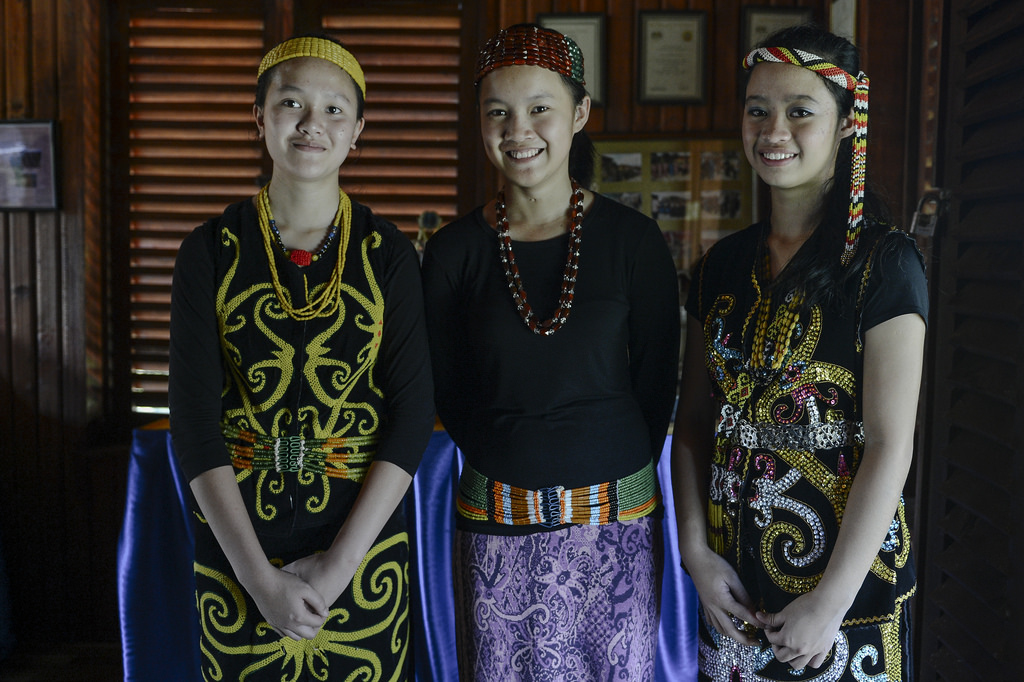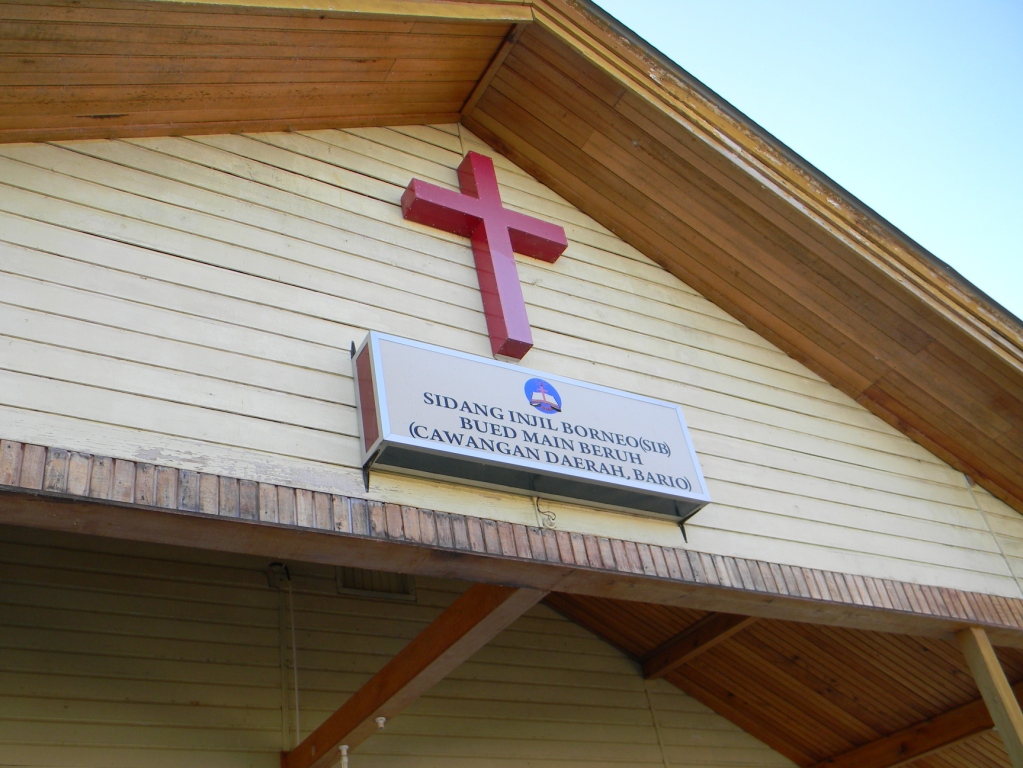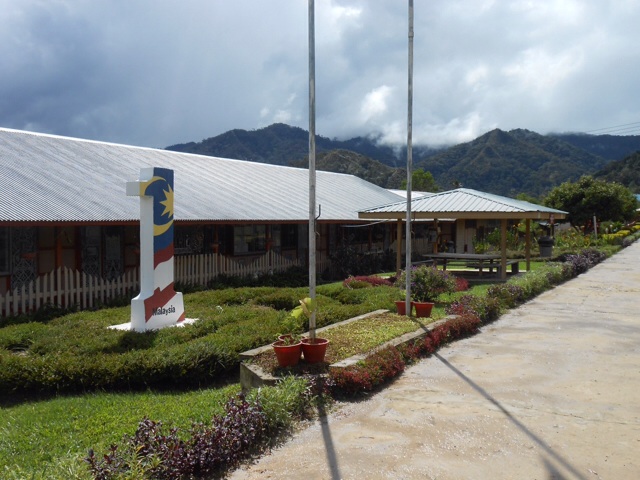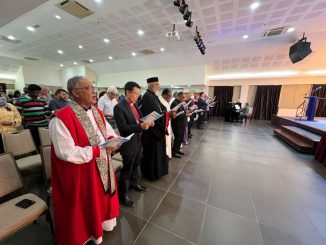
In a time in which revival seems to be so crucial to the Malaysian Church, none is more apt to remind ourselves of as the Bario Revival. This was one of the most massive outpouring of the Holy Spirit upon a community in Malaysian history.
The Bario Revival was closely tied to a rapidly growing church, the Sidang Injil Borneo (SIB). Today, the SIB is the largest single Protestant denomination in the nation. Yet, the revival had its origins in the most unlikely of places. Back in 1973, before the Bario Revival, the Kelabits in Bario were a simple people in a remote area, cut off from most parts of the world.
In his book, ‘The Bario Revival’, Solomon Bulan writes that one has to only understand the spiritual state and simplicity of the people, as well as the remote location, to understand God’s sovereignty in this revival. The revival was nothing short of miraculous.

It started from a simple meeting in October 1973 with student leaders of the Inter-School Christian Fellowship (ISCF) of the Bario Government Secondary School. In that meeting, amidst an atmosphere of spiritual heaviness and expectancy, a bold prayer of repentance and pouring of the heart was made by one formerly timid boy. Nevertheless, this movement of God upon the spirits of the people soon spread throughout not just the whole assembly but the whole community.
This article will be the first of two that will take a look at the Bario Revival. Much of it will be a condensation of what I have learnt through a book written by Solomon Bulan and Lillian Bulan-Dorai. There is a lot more content in the book that I will not go into due to space constraints, and I highly recommend for readers who are able to get a copy of the book to do so.
For the purpose of those who are unable to find the book, or who may have time constraints, this article will be looking into the background context of the revival (the place and its people), as well as the beginnings of the revival fire.
The Place
Located 3,500 feet above sea level in north-eastern Sarawak, Malaysia, Bario (the name is a merger of the two words ba-a and marariu, meaning “windy swamp” in the Kelabit language) is believed to be the highest settlement in the whole of Borneo Island. It is an upland bowl-like plain surrounded by rocky cliffs and jagged limestone peaks, some rising to 7500 feet. The untouched natural beauty of the place as well as its isolation moved many of the British officers who visited the place, and one compared it to the fabled Shangri-La.

Much of the flat land within the plain is covered by cultivated fields with its villages spread and mostly located 2-4 kilometres apart from each other. Even today, access to the location is dependent upon good weather due to its altitude, and during the rainy season, the thick sludge makes the area inaccessible even to 4WDs.

The Bulans writes; “Most of the services found in Bario today are also recent additions. The rural health centre has been upgraded to a medical clinic, and the border scout post to a police station. There is no electricity supply, so some households and businesses use generators fuelled by diesel or petrol. Most homes still use firewood for cooking.” [‘The Bario Revival‘; Page 26].
The People
The Kelabits are hardy, tough, and resourceful, but they’re a gentle, soft-spoken people who live a bucolic and pastoral lifestyle of rural peace. A notable trait is their hospitability, often making sacrifices for their guests.
“A stroll around Bario takes you past water buffaloes lolling by lush paddy fields, little children frolicking nearby and farmers tilling their lands. In the mornings, evenings and on rainy days, they often relax by huddling around smoky wood fires. By 9 o’clock at night, unless there is a special event, the highland falls into dead silence as the villagers retire to bed.” [“The Bario Revival“; Page 27].
The Kelabits possess a highly-developed sense of arts and culture, and many of the reports describe them as a progressively-minded people. They were among the first to accept the education and changes that came among their midst, and they make great efforts to pursue education. Inevitably, many of the Kelabit would migrate to cities.

The Bulans relates that the Kelabits and the Lun Bawangs are perhaps the only ethnic groups in Sarawak who, as a people, had been open to the Gospel en masse. Considering that the Kelabits were the only one among the converted groups who did not have a resident missionary, it was amazing that despite their scatteredness, they made a significant switch to Christianity in only a few short years. In retrospect, the Bulans mused, this could have been a sign of God’s future favour upon them.
The Gospel among the Kelabits
The Gospel was first brought to the Kelabits by missionaries from the Borneo Evangelical Mission (BEM), and much of the first decade of work was exploratory, making contact with as many of the indigenous people as possible. The first missionary to the Kelabits was Frank Davidson.

Following a short visit by Davidson and another missionary, C. Hudson Southwell, to the Kelabit Highlands in 1939, a wave of change swept through the then main settlement of Pa’Terap (now Pa’ Lungan). Its influential and powerful headman, Tama Bulan, had given up drinking and spirit worship and was enjoining others to do the same. A man called Pun Abi was the first known Kelabit to make a bold declaration as a stand of faith in God.
In 1943, a Christian and Missionary Alliance (CMA) missionary, Aris Doemat came to Pa’Terap and the people embraced Christianity en masse. The Bulans relate that by the mid-1940s, the Kelabits had been liberated from an oppressive animistic lifestyle. Though much challenge would come, progressive steps were made in the hearts of the people, and spiritual progress as well as education and health consciousness would advance the lives of the Kelabit people.

Sadly, many upheavals such as the Brunei Rebellion of 1962 and the Konfrontasi by President Sukarno in 1963 would cause nominalism to set in among the Kelabit. It was in such a setting that God would move powerfully among the people and the first stirrings of revival begin. Only through God’s intervention would the people realize their sinfulness, inadequacy and desperate need for God’s mercy.
“But the mighty wind was not released,” the Bulans write, “without a concerted seeking of sanctification”. The revival happened because of the persistency of people’s seeking after and surrendering to God, and the ministry of Peterus Octivianus calling the people to repentance.
Revival Fire Spreads
The Bario Revival came unexpectedly among a group of young students, but it spread like fire, first among parents, then among the community, then from one localized community to another. Always it was accompanied by one common sign; the people’s sense of shamefulness and sinfulness before God. This led the people to a desperate seeking after God in repentance for forgiveness, crying for mercy, not just for their sins but also for their religious hypocrisy and bondage to church traditions.

The Bulans relate that many of the church people felt convicted that they had lost their first love amidst all the problems and activities of the churches they had planted, and that it had distracted them from the primary mission of God; to seek lost souls. In the revival, the Holy Spirit prompted many to declare aloud their spiritual emptiness and bankruptcy and their surrender and dependence upon God.
But many who repented also felt a sense of love from God and relief from His forgiveness over their sins. At a regular service in the school, Solomon remembered, many spontaneously took their turns testifying of God’s dealing in their lives before a large crowd. Others spoke words of encouragement, exhorted from the Scriptures, prophesied, or shared visions from God. Barriers that had been there for years were broken.

Initially, as with much of the movement of the Holy Spirit today, the seemingly disorderly conduct of those who came under the power of the Holy Spirit made some leaders of the churches and community suspicious. Some were even readying proofs that the revival was the “work of evil spirits”, likening the “falling unconscious for several hours” to the possession by the evil spirit ada’isung as practiced during paganistic days. Many of them, however, would themselves be touched by the Holy Spirit and become active ministers for God years after the revival.
Providential Consolidation for the Revival
The Bario Revival soon took divine significance. People traveled for hours to attend prayer meetings that were held every night, putting up with discomfort, and sometimes the daily schedule like fieldwork and school hours were interrupted. Inevitably, many others took the revival in an antagonistic way.

One man, the late Dato’ Sri Joseph Balan Seling, would play an important part in providing consolidation to the revival, writing and sending letters to the young people and new believers to cooperate with the leadership, grow in maturity and be witnesses for Christ by their lives, words and actions.
“In the absence of practical guidelines, the counsel given by Balan was greatly appreciated. It encouraged the faith of the youths and many others who had been touched by the power of the Holy Spirit. It answered many questions that arose out of the new experiences. More importantly, it brought a sense of balance to situations that seemed disorderly and chaotic. The people had always yearned and prayed that the Holy Spirit be allowed to move freely, touching every person in all the churches. Balan’s letters provided an assurance of this freedom” [“The Bario Revival”; Page 105]
Revival Spreads with Signs and Wonders
The Bario Revival was like the outpouring of the Holy Spirit on the Early Church in Acts 2. Many who experienced the visitation were transformed, bringing the Good News to outlying regions. Many signs and wonders took place.

One lady was delivered from an evil spirit in much the same way as Mark 5. A group of young missionaries who got lost in the jungle found the branches they were holding in their hands lit and being led to the nearest village. Fire balls appeared in the night sky of Ba’kelalan.
In all, the Bario Revival would manifest in 4 waves during a 10-year period from 1973-1984.
|Share The Good News|
– Jason Law




Where can we order the book. We live at Kuala Lumpur. Pls PM me
Sent a private email to your inbox. I got my copy from FGA KL. Will keep a lookout for the book. God Bless
Would like to buy the book, Bario Revival By Solomon Bulan
The book is available from Canaanland bookstores – in KL and Canaanland online.